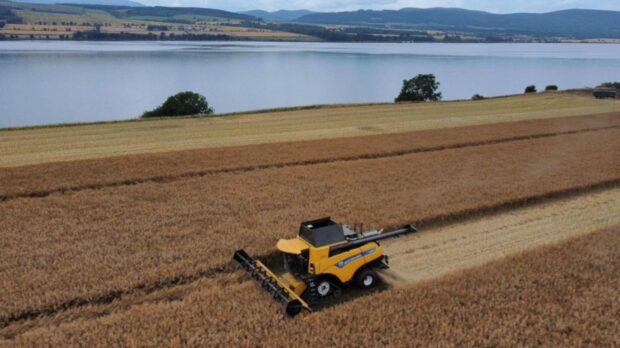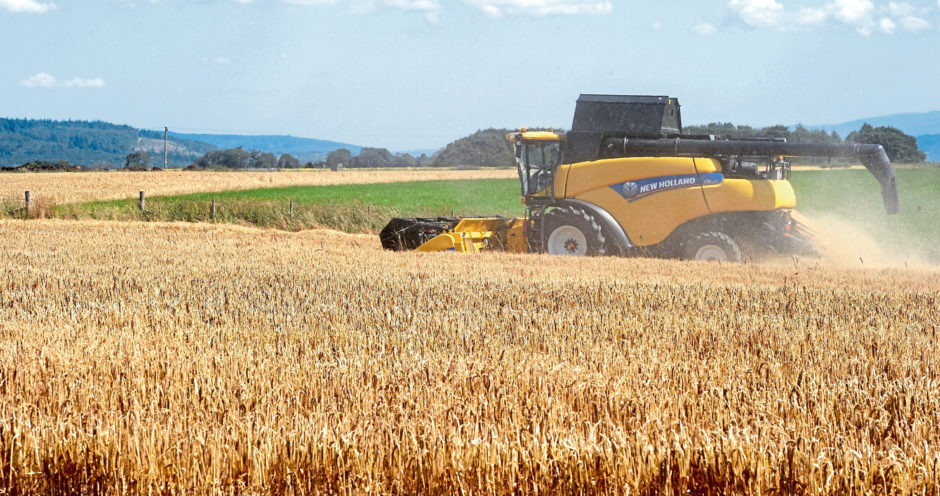Better weather has meant that the harvest season is now progressing across the UK but only 24% of this year’s spring barley was complete by this time last week, according to data from AHDB.
The levy board has published the third harvest progress report of 2023, covering the beginning of harvest up to August 15, or week six.
Winter wheat is very much behind last year’s rapid progression, and spring barley harvest is lagging behind five-year averages due to later sown crops which are still not mature in some areas.
Winter barley harvest is now near complete but there is still a small number of fields left in Yorkshire and Scotland, which is on par with the five-year average of 99%.
To the week ending August 15, the GB oat harvest is 34% complete and winter oilseed rape harvest is 98% complete.
In Aberdeenshire, spring barley harvest has just commenced in the last few days, mainly in the Turriff district, which is known for being an earlier growing area.
Ron Paterson, agronomist with ProCam in Aberdeenshire, said that he is fairly optimistic on this year’s spring barley harvest and results should be better than first anticipated.
Of what has been cut so far, Mr Paterson said samples were very pleasing considering a difficult year of varied and late sowing, followed by mixed weather in the summer.
He said quality is good so far and yields are back although still very respectful.
“The biggest problem in spring barley this year is secondary growth so a large percentage of crops in Aberdeenshire have only been sprayed off with Glyphosate either last week or this week, resulting in them not being ready to harvest for another 12 to 14 days,” said Mr Paterson.
“Secondary growth has also resulted in nitrogen levels being a bit higher and crops are generally shorter so straw yields will be back on the year too.
“We just need to hope for a great spell of weather to not only allow farmers to get going when the time comes but to eliminate the need for drying grain when the price of fuel is on the rise again.”
Mr Paterson said winter wheat results in Aberdeenshire have been slightly disappointing, with grain size generally smaller due to pressure from disease in the Skyscraper variety.
He said come the first few days of September, spring barley will be ready across Aberdeenshire and hopefully combines will be in full flight.
In earlier growing areas across Morayshire and the Highlands, spring barley harvest is well underway.
Peter Macintyre of Findon Farms on the Black Isle, said he is about 60% through his spring barley harvest and yields are better than predicted.
He said: “We are finding the grain is ready but the straw is taking its time to ripen so the combine is moving slower than preferred.
“The quality is good but we are seeing a variation in skinniness from field to field and nitrogen levels have increased in the later sown fields. So far though, everything is falling into spec.”
Mr Macintyre said his oilseed rape performed well, with good yields and a higher than average oil content, and all 120 acres of winter wheat was complete by August 12, before the spring barley, which was a first on the farm.
“We harvested the oilseed rape in wetter conditions than preferred at 10% to 14% moisture but we managed to hit a good weather window in the winter wheat, harvesting at 15% and 18% moisture.”











